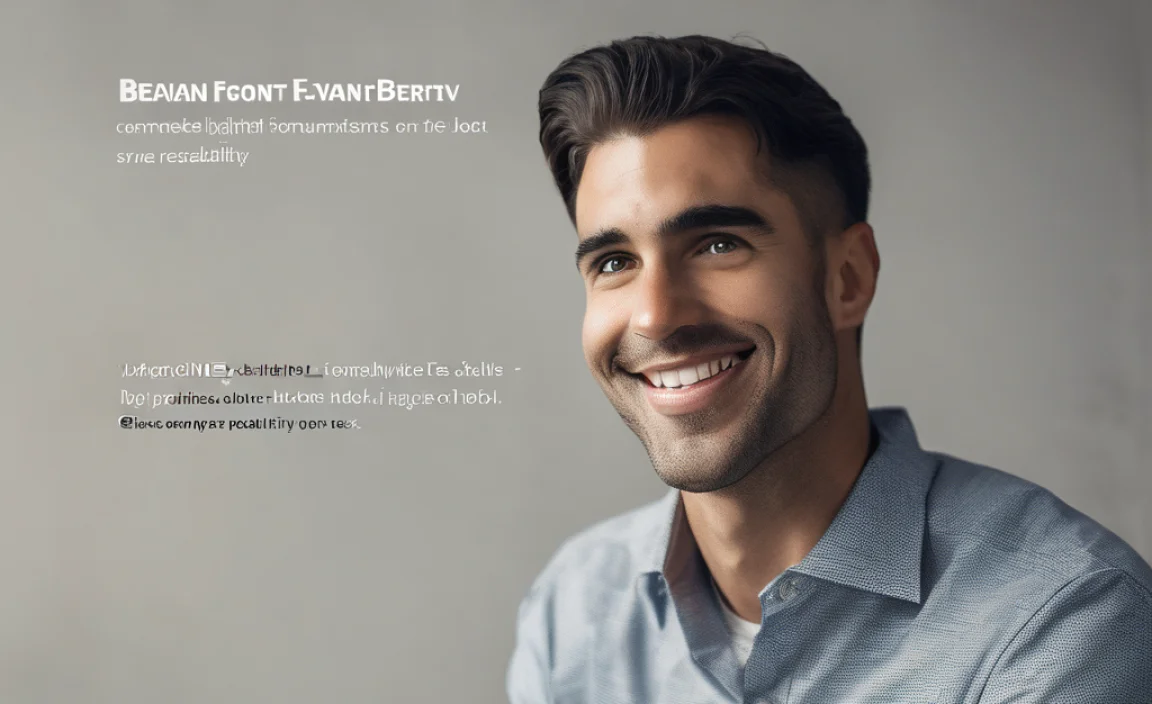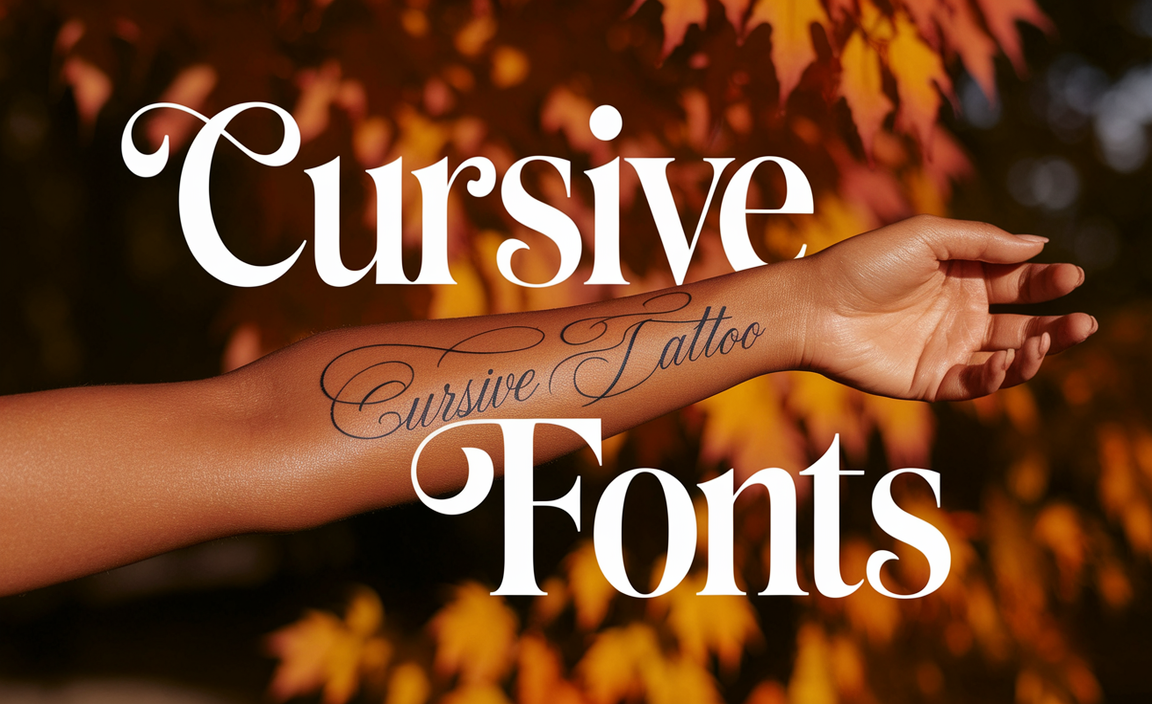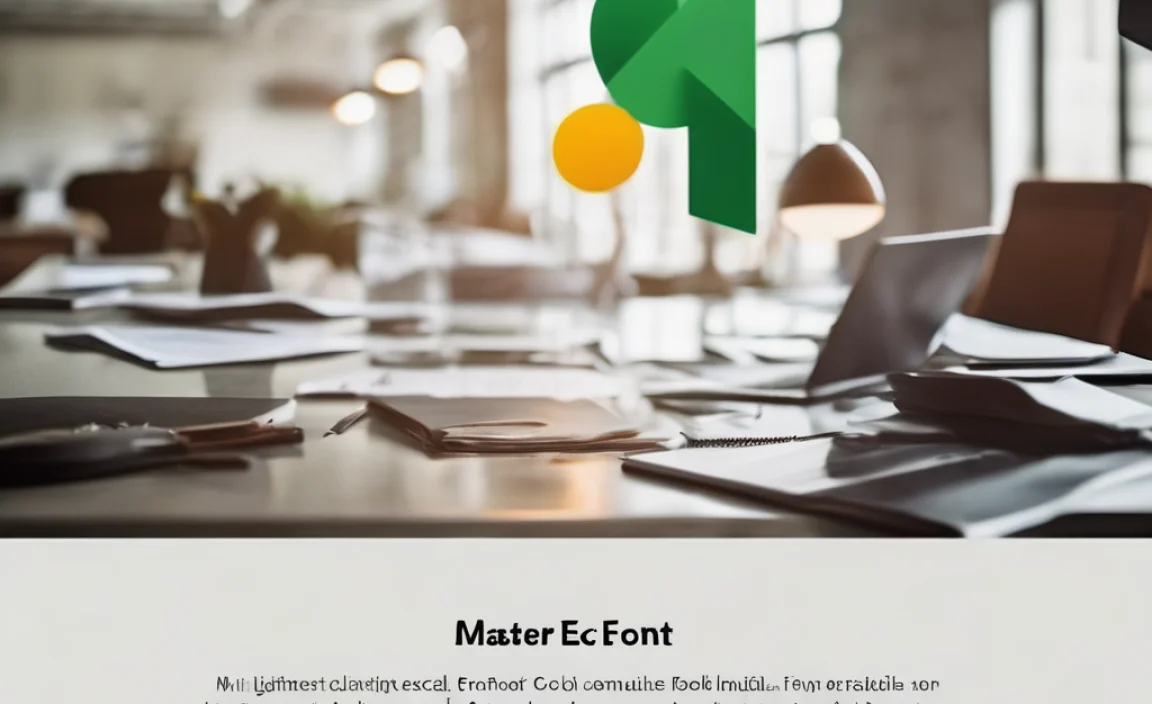Revival Tour Font is an essential design tool that brings a unique blend of vintage charm and modern versatility to any project, making it perfect for creating memorable branding, engaging web designs, and eye-catching marketing materials.
Typography can feel a bit like choosing the right outfit for a special occasion. There are so many options, and sometimes it’s hard to know if you’re making the best choice! Many creatives find themselves drawn to fonts that offer a distinctive personality, but worry about finding something that’s also highly usable. If you’ve ever felt overwhelmed by font choices or wished for a go-to typeface that strikes a beautiful balance between character and practicality, you’re in the right place. Today, we’re diving deep into the Revival Tour Font, a truly special design asset that’s more than just letters on a page – it’s a ticket to creating stunning visuals. Get ready to discover how this font can elevate your next project!
What Makes the Revival Tour Font So Special?
Every designer dreams of finding those few typographic gems that just work, no matter the context. The Revival Tour Font is precisely one of those gems. It’s not just another pretty face; it’s a carefully crafted typeface designed to capture attention while maintaining excellent readability. Think of it as that perfectly tailored jacket – it looks fantastic, feels comfortable, and makes you stand out effortlessly.
Its charm lies in its ability to evoke certain feelings and eras. Whether it’s a nostalgic nod to the past or a bold statement of contemporary style, Revival Tour Font delivers. This versatility is key for anyone looking to build a cohesive brand identity or create visually compelling content.
A Glimpse into the Revival Tour Font’s Design DNA
The Revival Tour Font strikes a delightful balance between classic and contemporary. Its origins often hint at influences from vintage signage, hand-lettered posters, and mid-century design aesthetics. However, its execution is far from dated. The designers have infused it with refined curves, balanced proportions, and a distinct personality that feels fresh and relevant today.
This careful blend means the font is legible enough for body text in certain applications but shines incredibly well for headlines, titles, and logo design. It’s this duality that makes Revival Tour Font a standout choice for many creative professionals.
Key Characteristics to Admire
Let’s break down what makes this font so appealing and functional:
- Unique Personality: It carries a warmth and character that generic fonts often lack, making your designs feel more authentic and memorable.
- Versatile Application: While it excels in display settings, careful design ensures it doesn’t become unreadable at smaller sizes when used strategically.
- Nostalgic Yet Modern Feel: It has a touch of vintage appeal without feeling old-fashioned, bridging the gap between past and present design trends.
- Distinctive Letterforms: Features that might include slightly exaggerated serifs, unique swirls, or a particular weight distribution that sets it apart visually.
- Good for Branding: Its strong identity makes it ideal for logos, packaging, and any branding element that needs to leave a lasting impression.
Where and Why to Use Revival Tour Font
The beauty of a versatile font like Revival Tour is its adaptability. It’s not confined to a single niche. Instead, it opens up a world of possibilities for a wide range of projects. If you need your design to tell a story, evoke a feeling, or simply grab attention, Revival Tour Font is a powerful ally.
Ideal Use Cases for Revival Tour Font
Consider where this typeface can truly shine:
- Branding and Logos: Its distinctive character makes it perfect for creating unique brand identities that are instantly recognizable. Think craft breweries, artisanal food brands, boutique hotels, or vintage-inspired clothing lines.
- Marketing Materials: Flyers, posters, social media graphics, and advertisements can benefit from its eye-catching style. It helps your message cut through the noise.
- Website Design: Use it for headings, banners, and calls-to-action to add personality and guide the user’s eye. It can make a website feel more engaging and unique.
- Editorial Design: Magazines, book covers, and even certain blog posts can utilize Revival Tour Font for titles and subheadings to add flair and visual interest.
- Event Signage: For themed events, parties, or special occasions, this font can instantly set the mood and theme.
- Product Packaging: From coffee bags to cosmetic boxes, it can give products a premium, handcrafted, or retro feel.
Why It’s a Smart Choice for Designers
Beyond its aesthetic appeal, Revival Tour Font offers practical advantages:
- Enhances Memorability: A unique font makes your designs stick in people’s minds.
- Conveys Specific Moods: It can communicate warmth, nostalgia, elegance, or a handcrafted feel more effectively than a generic sans-serif.
- Simplifies Design Decisions: For many projects, it can serve as your primary display font, reducing the mental load of font selection.
- Supports Brand Storytelling: The font’s personality can reinforce your brand’s narrative and values.
How to Integrate Revival Tour Font into Your Designs
Putting a new font to work might seem daunting, but with Revival Tour Font, it’s surprisingly straightforward. The key is to pair it thoughtfully and use it where it will have the most impact.
Step-by-Step Integration Guide
Here’s how you can start using it like a pro:
- Identify Your Project’s Mood: What feeling do you want to convey? Is it elegant, playful, vintage, or sophisticated? Revival Tour Font often leans towards warm, inviting, and slightly vintage vibes.
- Determine Usage: This font is generally best for headlines, titles, logos, and short bursts of text. For longer passages, you’ll likely need a simpler, more legible companion font.
- Pair It Wisely: Choose a secondary font that complements rather than competes. A clean, readable sans-serif or a straightforward serif often works wonders. Think of it as pairing a statement necklace with a simple dress. For instance, a font like Open Sans or Lato can provide a solid, readable base when paired with Revival Tour Font for headings.
- Consider Size and Spacing: Ensure the font is legible at the size you intend to use it. Pay attention to kerning (the space between individual letters) and leading (the space between lines of text) to optimize readability, especially if using it for slightly longer phrases.
- Test Across Platforms: If using for web design, always test how the font renders on different browsers and devices. Ensure its web-safe versions or properly embedded files display correctly. Resources like Google Fonts offer excellent, free web fonts that can serve as great pairings.
- Maintain Consistency: Once you’ve decided on pairings and usage, stick with them throughout your project or brand identity for a cohesive look.
Tips for Pairing Revival Tour Font
Finding the perfect partner font is crucial. Here are some strategies:
- Contrast is Key: Pair Revival Tour’s distinctiveness with a font that offers simplicity. A geometric sans-serif or a minimalist serif can create a pleasing contrast.
- Match the Mood: If Revival Tour Font feels warm and inviting, choose a companion font that shares a similar underlying tone, even if it’s plainer.
- Prioritize Readability: For any text that needs to be read at length, opt for a font known for its legibility (e.g., Roboto, Merriweather).
- Don’t Overdo It: Typically, one distinctive display font (like Revival Tour Font) and one highly readable body font are all you need for a balanced design.
Revival Tour Font vs. Other Font Types
Understanding how Revival Tour Font fits within the broader typographic landscape helps in making informed design choices. Fonts are generally categorized by their features and styles, each serving different purposes.
Categorizing Revival Tour Font
While Revival Tour Font has unique characteristics, it often falls into a few categories depending on its specific design. It might be classified as a:
- Display Font: These are designed for headlines and showy purposes, meant to grab attention. Revival Tour Font excels here.
- Decorative Font: Fonts with strong personality and distinct features, often inspired by specific themes or eras.
- Script-inspired or Serif with Flair: Depending on its exact strokes and terminations, it might borrow elements from script or highly stylized serifs.
Comparison Table: Revival Tour Font and Common Font Categories
Let’s see how Revival Tour Font stacks up against other common font types:
| Font Type | Key Characteristics | Best For | Revival Tour Font’s Role |
|---|---|---|---|
| Serif Fonts (e.g., Times New Roman) |
Have small decorative strokes (serifs) at the ends of letter strokes. Feel traditional, formal, literary. | Body text in print (books, newspapers), formal documents. | May share the “classic” feel but Revival Tour is more decorative and less suited for extensive body text. |
| Sans-Serif Fonts (e.g., Arial, Helvetica) |
Lack serifs; clean, modern, minimalist. | Web body text, headlines, signage, tech interfaces. Highly readable. | Serves as an excellent, clean, readable pairing for Revival Tour Font’s headings. |
| Script Fonts (e.g., Brush Script MT) |
Mimic handwriting or calligraphy; elegant, casual, or formal. | Invitations, signatures, decorative elements, occasional branding. | Revival Tour Font often has a more structured, less fluid feel than true script fonts but can convey similar warmth. |
| Display Fonts (e.g., Impact, Bebas Neue) |
Designed for large sizes and short bursts of text; focus on impact and personality. | Headlines, posters, logos, titles. | Revival Tour Font is a prime example of a distinctive display font that offers strong personality and visual appeal. |
| Revival Tour Font | Vintage-inspired, warm, unique letterforms, high character, versatile for display. | Branding, logos, headlines, marketing materials, event design. | Its strength is its inherent personality and ability to make designs feel special and memorable, often used as a signature element. |
When to Choose Revival Tour Font Over Others
opt for Revival Tour Font when:
- You need your design to have a strong, memorable personality.
- You are aiming for a vintage, retro, or handcrafted aesthetic.
- The text will be used in large sizes, such as headlines, logos, or posters.
- You want to add warmth and character that a plain sans-serif can’t provide.
- You’re branding something that evokes nostalgia, craftsmanship, or a unique story.
Boosting Readability and Visual Hierarchy with Revival Tour Font
A font’s aesthetic appeal is only half the battle; it must also be functional. Revival Tour Font, when used correctly, can significantly enhance both readability and the overall visual hierarchy of your designs.
Achieving Readability
The perception of readability can depend heavily on the specific design of the Revival Tour Font variant you are using and the context. However, as a display-oriented font, its strengths lie in:
- Distinct Letterforms: While decorative, well-designed Revival Tour fonts usually have clear, easily distinguishable letter shapes, reducing ambiguity at larger sizes.
- Strategic Use of Contrast: When paired with a highly readable sans-serif or serif font for body text, the contrast helps guide the reader’s eye. Revival Tour Font draws attention to key information, while the secondary font makes the details digestible.
- Appropriate Size: As mentioned, this font isn’t typically for long paragraphs. Using it for headlines or short phrases ensures its unique characteristics enhance, rather than hinder, comprehension.
Establishing Visual Hierarchy
Visual hierarchy is about guiding the viewer’s eye through your design in a specific order of importance. Revival Tour Font is an excellent tool for this:
- Dominant Headlines: Place Revival Tour Font prominently for main titles. Its distinctive style will immediately capture attention and signal the topic.
- Subheading Emphasis: It can also be used for secondary headings or pull quotes to break up text and highlight important snippets, adding visual interest.
- Creating Focal Points: In layouts with a lot of information, a well-placed Revival Tour Font element can act as a deliberate focal point, drawing the viewer in.
- Brand Reinforcement: Consistent use of Revival Tour Font for key branding elements (like your logo and main headlines) reinforces your brand identity throughout the design.
Think of it like organizing a library. You want the main book titles (headlines in Revival Tour Font) to stand out on the shelves, making it easy to find what you’re looking for. The smaller text descriptions (body text in a companion font) provide the necessary details once the reader has focused on a particular title.
Where to Find and Download Revival Tour Font
Acquiring high-quality fonts is an essential step for any designer. Revival Tour Font, like many unique typefaces, might be available through various channels. Always ensure you are downloading from reputable sources to get the best quality and adhere to licensing terms.
Reputable Font Marketplaces
You can typically find fonts like Revival Tour Font on:
- Professional Font Foundries: Many independent type designers and foundries offer their creations. Check their official websites.
- Stock Asset Sites: Platforms like Adobe Fonts, Creative Market, Fontspring, MyFonts, and Envato Elements often feature a wide selection of display and specialty fonts.
- Google Fonts: While Revival Tour Font might not be found directly on Google Fonts, it’s an invaluable resource for finding excellent pairing fonts. Their commitment to open access makes them a cornerstone for web designers. Learn more about their mission and library at Google Fonts.
Understanding Font Licensing
It’s crucial to understand font licensing. When you download or purchase a font, you’re typically acquiring a license to use it, not the copyright.
- Desktop License: Allows you to use the font on your computer for design work (print, graphics, logos).
- Web License: Necessary if you plan to embed the font on a website. This often comes with restrictions based on monthly visitors.
- App/Epub License: For use within software applications or e-books.
- Commercial Use: Always check if the license permits commercial use, especially if you are designing for clients or selling products.
Purchasing Revival Tour Font from a legitimate source ensures you have the correct license for your intended use and supports the type designer’s work.
Common Challenges and How to Overcome Them
Even with a fantastic font like Revival Tour, designers can sometimes encounter a few hurdles. Let’s address some common challenges and how to tackle them with confidence.
Challenge 1: Overusing a Distinctive Font
Problem: Revival Tour Font’s unique character is compelling, but using it everywhere can make a design feel cluttered or unprofessional.
Solution: Implement a strict hierarchy. Reserve Revival Tour Font for its strongest applications: main titles, logos, and short, impactful phrases. Use a clean, neutral font for all other text. Remember, less can be more with personality-driven fonts.
Challenge 2: Readability Concerns at Small Sizes
Problem: As a display font, Revival Tour Font might lose legibility when scaled down significantly.
Solution: Always test your design at actual size. If reading Revival Tour Font becomes difficult in specific contexts (like small print or UI elements), switch to a more readable font for those specific areas. You can still maintain the brand’s feel with color and weight in the secondary font.
Challenge 3: Finding the Perfect Pairing Font
Problem: Selecting a companion font that complements, rather than clashes with, Revival Tour Font can be tricky.
Solution: Focus on contrast. Look for sans-serifs with clean lines and a neutral feel (e.g., Montserrat, Raleway, Source Sans Pro) or classic serifs with straightforward forms. Browse font pairing tools or look at designs you admire for inspiration, but always test pairings in your actual project.
Challenge 4: Licensing Confusion
Problem: Understanding the terms of use and ensuring you have the right license for your project.
Solution: Purchase Revival Tour Font from reputable marketplaces that clearly list licensing options. If in doubt, contact the font vendor or designer for clarification. Using fonts without the proper license can lead to legal issues.
By being mindful of these potential issues and applying thoughtful design strategies, you can harness the full power of Revival Tour Font to create truly outstanding work.
Frequently Asked Questions About Revival Tour Font
Q1: Is Revival Tour Font suitable for body text?
A: Generally, Revival Tour Font is best suited for headlines, titles, logos, and short phrases due to its distinctive character. For longer passages of text that require high readability, it’s advisable to pair it with










